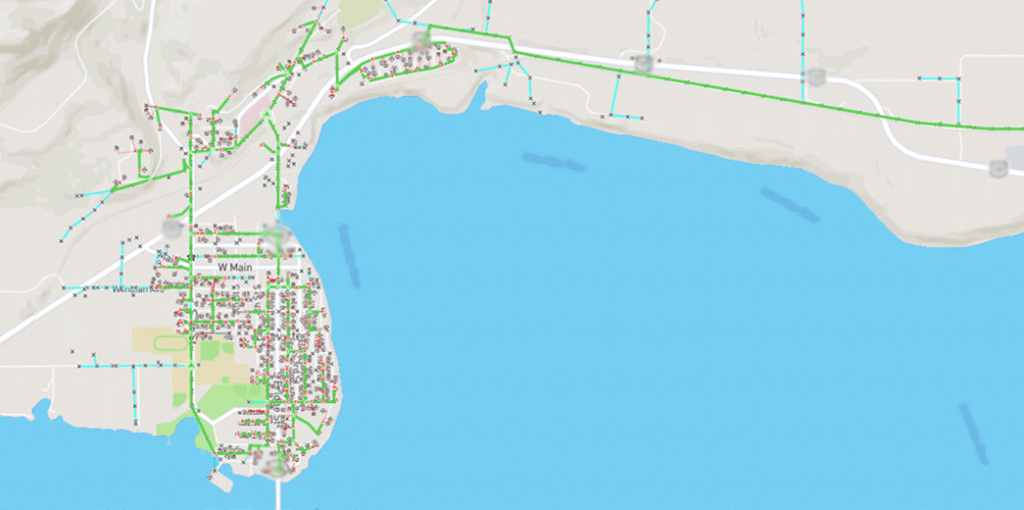With billions of dollars in broadband funding on the horizon, organizations have a once-in-the-lifetime infrastructure investment opportunity to help deliver much-needed connectivity to underserved populations. If you don’t yet have a thought leader and experienced partner by your side to help you plan, design, and build your broadband program, contact us to discuss how Tilson can help you start the process.
In this latest installment of our, “Are You Shovel-Ready?” blog series, we answer a question that our Broadband Consulting team has heard several times over the last few weeks from both service providers and municipal governments who are considering using subsidy to expand broadband connectivity: How can we quickly, and cost-effectively, evaluate the scope and cost of a broadband infrastructure investment?
As rules for most funding programs are yet to be released, now is the time to create a well-supported high-level design (HLD) that will answer this question. A well-done HLD will demonstrate to your potential investors what your ultimate network will look like and how much it will cost, while also not breaking the bank. The intent is to rapidly, and cost-effectively, create documentation that will both inform decision-making and attract investors (public or private). In this article, I will share Tilson’s approach to this topic and how it can help you prepare a truly “shovel-ready” project.
The best way to describe the design process is to lay out an example and walk through it. So, we are going to outline the steps we would use to deploy a hybrid fiber-to-the-premise (FTTP), CBRS small cell, and public Wi-Fi design for Springfield USA, the home of the Simpsons!
To keep this example manageable, we will begin by adding two “facts” to the Simpson’s universe, to enable our network to connect to the Internet:
Next, we will document the key objectives of the project, based on our meeting with Mayor Quimby last week:
Tilson has developed a software-supported desktop evaluation process to develop high-level designs (HLD) for fiber, wireless, and hybrid networks. This process leverages Geographic Information Systems (GIS), automated networks design and deployment tools, input from experienced engineers and construction/deployment professionals, and internal quality control and assurance processes. If designs and models meet customer objectives and financial performance criteria, they can be refined and further improved through field work and detailed engineering, culminating in a shovel-ready design to kick-off construction efforts and attract investors.
Developing a HLD for Springfield USA would follow these steps:
Step 1: Define Target Fiber Service Locations. Tilson staff will define the target fiber service locations using GIS. These include:
Step 2: Preliminary Fiber Design. The target endpoints are exported from GIS and imported into Tilson’s fiber design tools, which support a semi-automated fiber design process. This step’s output is a preliminary fiber network design that includes backbone, distribution, drop fiber, network electronics, cabinets and shelters, and other components. Our preliminary design process typically takes a centerline approach, but if pole-data is readily available, we will generate higher-accuracy aerial routes based on pole locations.
Step 3: Revised Fiber Design. An experienced engineer reviews the preliminary design and adjusts the fiber path, network design, electronics, cabinet/shelter locations, and other design elements (where necessary) to improve the efficiency of the design and ensure that it meets project requirements. The revised fiber design undergoes a thorough a peer-review quality assurance process. The output of this step is the final high-level fiber network design and associated Bill of Materials (BOM).

Step 4: RF Design. An experienced RF engineer will work with the Town of Springfield to develop critical criteria, including advising and settling on technology options based on the goals and budget of Springfield (private LTE, point to multipoint etc.). Based on the target locations to be served by the wireless option, the technology selected to provide such connectivity, and other criteria defined by Springfield, Tilson evaluates available spectrum, potential interference, existing vertical assets, general topography, clutter, and other factors to determine the preferred placement of wireless assets and project anticipated coverage polygons. This process is repeated individually for each wireless segment of the project (e.g., CBRS and Wi-Fi) due to differences in technology, propagation, etc. The resulting output is the defined placement of various wireless assets, expected connectivity diameter/reach of each asset, and a list of materials supporting the wireless components of the high-level design for inclusion in the initial BOM.
Step 5: Quality Control. At this stage, experienced engineers evaluate both the fiber and wireless designs to test assumptions, evaluate cost efficiency, and ensure it meets objectives. Recommendations for client consideration and appropriate tradeoffs may be identified and documented at this stage. This may include opportunities to close a ring for fiber redundancy, reevaluate splitter architectures, equipment recommendations, fiber-to-wireless swaps to reduce capital costs, upgrades to power future expansion opportunities, route changes to reduce buried construction costs or excessive make-ready, and other considerations.
Step 6: Capital Construction Projections. Tilson has developed specific tools and procedures that leverage the BOM (Bill of Materials) derived from the final fiber design and maps each cost element to standard projections for material, equipment, labor, make-ready, and permitting costs based on other OSP projects. A sourcing manager reviews the BOM and final costs to ensure accuracy. This allows Tilson to develop capital construction projections based on Tilson’s extensive experience constructing broadband networks, including projected aerial and underground construction costs, site acquisition costs, and many other factors.
Step 7: Operating Cost Projections. Using industry best practices and leveraging our consulting knowledge and capabilities, Tilson has developed operating models to complement our capital costing tools. These models can support customers in analyzing and developing staffing needs and projecting ongoing maintenance costs and long-term capital investment decisions. While certain aspects of these models and can be predicted, each is tailored to a customer’s goals and operating environment.
The result of this process is a highly accurate network design for the Town of Springfield that is closely aligned with project objectives. The associated financial and operating models offer insight to both the short-term capital requirements and long-term sustainment costs. With this design and associated cost-estimation, Springfield’s decision makers are now armed with the information to strategically proceed with funding, detailed engineering, and implementation of a network that accomplishes their goals.
This process is designed to provide as much detail as possible for a proposed network while balancing the level of effort to engineer such a network. The intent is to rapidly, and cost-effectively, gain a well-supported understanding of what the ultimate network will look like and how much it will cost. While later field-driven engineering studies will improve understanding of costs, terrain, make-ready, and other conditions that can lead to cost savings and efficiencies, your initial HLD will both inform decision-making and attract investors (public or private) without breaking the bank or unduly delaying implementation. The outputs of Tilson’s High Level Design process provide:
At a very small fraction of overall capital expenditure necessary for network implementation, and with a very small time commitment, Tilson’s High Level Design process provides an enormous amount of value to provide a rock-solid footing to successfully launch your telecommunications infrastructure project.
If you don’t yet have a thought leader and experienced partner by your side to help you plan, design, and build your broadband program, contact me at aquinlan@tilsontech.com to discuss how Tilson can help you start the process.
—-
Tilson designs, builds, and maintains sustainable and cost-effective broadband networks that are essential to the health, safety, and quality of life in the modern community. Learn more about our comprehensive broadband deployment services or contact us to discuss your specific broadband goals.

Adam Quinlan serves as Manager of Broadband Consulting at Tilson, leading a team of experienced consultants to plan, design, build, and maintain viable and cost-effective broadband solutions. Adam joined Tilson in 2016, with a strong technical background and leadership experience as a managing partner of a small law firm focused on the intersection of law and technology. He holds a Bachelor’s degree in Economics, a Juris Doctor from the University of Maine School of Law, and is a licensed member of the Maine and Massachusetts Bar.